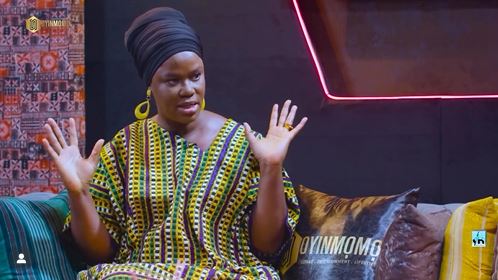Yorùbá medicine, known as egbòogi, is one of the most enduring African systems of herbalism and healing. Practiced predominantly in West Africa and the Caribbean, it remains a vital aspect of Yoruba cultural identity and health care. Rooted in centuries of knowledge, spiritual practices, and natural remedies, Yoruba traditional medicine has evolved from ancient times into a practice that now coexists with modern medical systems.
Historical Development of Yoruba Medicine
The origins of Yoruba traditional medicine date back to the earliest settlements in Ile-Ife, regarded as the cultural and spiritual heart of the Yoruba nation. Traditional medicine formed part of the people’s daily lives, deeply connected with their worldview, religion, and social structure. Health was perceived holistically, involving the body, mind, and spirit, and illnesses were often explained not only in physical but also in spiritual terms.
As Yoruba communities expanded into cities such as Ibadan, Lagos, Abeokuta, Ijebu-Ode, Ilesha, Ado-Ekiti, Osogbo, Ogbomoso, Ilorin, and Ile-Ife, healers and practitioners became central figures in society. Beyond Nigeria, Yoruba medicine spread to Benin, Togo, Cuba, and the Caribbean, carried along by migration and the transatlantic slave trade.
Practices in Diagnosis and Treatment
Yoruba traditional medicine is a multifaceted system that combines herbalism, spiritual healing, divination, and natural therapies. A Traditional Medicine Practitioner (TMP) is recognized by their community as competent to provide healthcare through the use of plants, minerals, animal parts, and spiritual guidance.
Some of the key practices include:
Herbal Medicine: Preparation of remedies using roots, leaves, barks, and seeds.
Bone Setting: Indigenous techniques for fractures and dislocations.
Spiritual Therapies: Healing rituals involving prayers, sacrifices, and consultation with deities.
Maternity and Childcare: Traditional birth attendants (TBAs) overseeing pregnancy and childbirth.
Mental Health Care: Traditional psychiatrists and spiritualists diagnosing and treating psychiatric conditions.
Other Therapies: Aromatherapy, massage therapy, music therapy, and ritual cleansing.
Specialization in Traditional Medicine
Yoruba medicine is not limited to general practice; it includes specialists who cater to specific health challenges:
Herbalists – focusing on plant-based remedies.
Bone Setters – skilled in handling fractures and dislocations.
Traditional Psychiatrists – managing mental and spiritual disturbances.
Traditional Paediatricians – caring for children’s health.
Traditional Birth Attendants (TBAs) – assisting in childbirth.
Occult Practitioners – dealing with mystical and spiritual interventions.
The Role of Religion and Mysticism
Religious beliefs play a central role in Yoruba medicine. Illness is often linked to cosmic or spiritual imbalances, requiring not just physical treatment but also spiritual intervention. Divination systems like Ifá are used for diagnosis, guiding healers toward the cause and solution of an illness. Rituals, incantations, and sacrifices are common elements of healing, reflecting the deep interconnection between health and spirituality.
The Coming of Orthodox Medicine
The introduction of Western, or orthodox, medicine into Nigeria during the colonial period brought significant change. Missionary hospitals, such as the Sacred Heart Hospital in Abeokuta (established in 1885), offered new approaches to health care. This development challenged the dominance of traditional medicine but did not erase its influence. Instead, both systems began to coexist, with many Yoruba people seeking remedies from both traditional healers and modern doctors.
Modernization of Yoruba Medicine
Today, Yoruba traditional medicine is undergoing modernization and standardization. Efforts have been made to document herbal knowledge, regulate traditional practices, and promote safe usage of remedies. Herbal products are increasingly packaged, branded, and sold commercially across Nigeria and abroad.
The Nigerian government, through agencies like NIPRD (National Institute for Pharmaceutical Research and Development), has emphasized the need to integrate traditional medicine into the national healthcare system. However, challenges remain in terms of standardization, dosage measurement, and scientific validation of herbal remedies.
The Way Forward
Yoruba medicine continues to thrive as a cultural heritage and healthcare system. For it to play a stronger role in modern society, government policies need to address:
Proper documentation of medicinal plants and practices.
Regulation of Traditional Medicine Practitioners (TMPs).
Research into the safety and efficacy of herbal remedies.
Collaboration between orthodox medicine and traditional healers.
Yoruba traditional medicine is more than an alternative healing system—it is a cultural legacy that reflects the Yoruba worldview of health, spirituality, and community. Despite the rise of orthodox medicine, egbòogi remains relevant in Nigeria and beyond, serving millions who still rely on its holistic approach. The modernization and proper regulation of this system will not only preserve a valuable cultural heritage but also contribute meaningfully to healthcare delivery in Africa.
FOLLOW US ON:
FACEBOOK
TWITTER
PINTEREST
TIKTOK
YOUTUBE
LINKEDIN
TUMBLR
INSTAGRAM


 News18 hours ago
News18 hours ago
 News19 hours ago
News19 hours ago
 News18 hours ago
News18 hours ago
 Business18 hours ago
Business18 hours ago
 Crime18 hours ago
Crime18 hours ago
 News19 hours ago
News19 hours ago
 Lifestyle18 hours ago
Lifestyle18 hours ago
 News17 hours ago
News17 hours ago





























